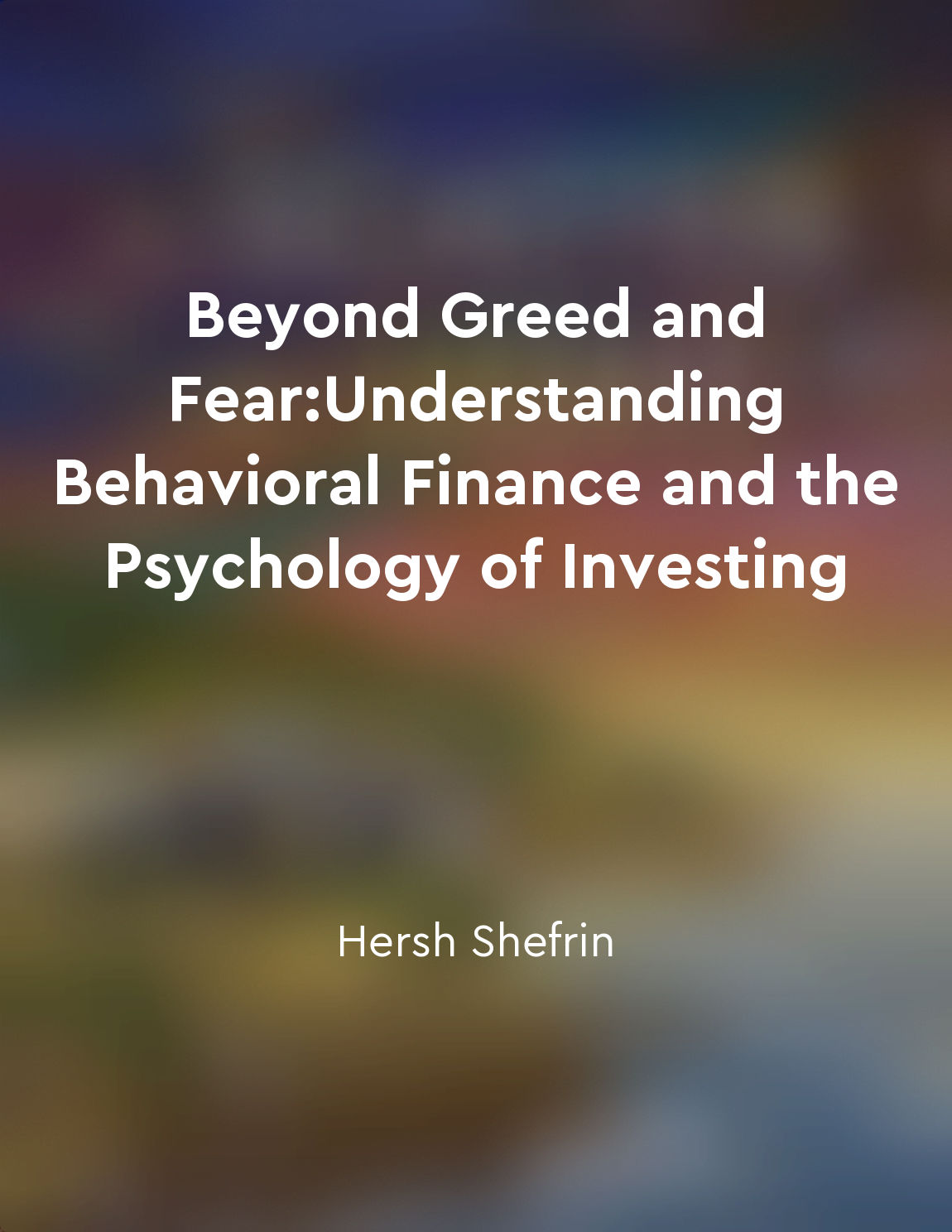The key to successful investing lies in avoiding common behavioral pitfalls from "summary" of The Little Book of Behavioral Investing by James Montier
One of the most crucial aspects of achieving success in investing is steering clear of the common behavioral traps that many investors tend to fall into. These pitfalls can sabotage even the most well-thought-out investment strategies and lead to poor decision-making. One common behavioral pitfall that investors often encounter is overconfidence. This stems from a tendency to believe that one's knowledge and abilities are superior to those of others. This can lead investors to take on excessive risks, ignore warning signs, and fail to adequately diversify their portfolios. Another common trap is the tendency to anchor or fixate on certain pieces of information, such as the price at which a stock was purchased. This can prevent investors from objectively reassessing a situation and making necessary adjustments to their investment strategy. Investors also frequently fall victim to herd mentality, where they simply follow the crowd or popular opinion without conducting their own research or analysis. This can result in rash decision-making based on emotion rather than logic. Loss aversion is another behavioral pitfall that can hinder investment success. This is the tendency for investors to feel the pain of losses more acutely than the pleasure of gains, leading them to make irrational decisions in an attempt to avoid losses at all costs. Finally, investors often succumb to the influence of media and market noise, which can cloud their judgment and lead to impulsive decision-making. It is essential for investors to tune out the noise and focus on their long-term investment goals. By recognizing and actively avoiding these common behavioral pitfalls, investors can increase their chances of success and make more rational, informed decisions. It is important to remain disciplined, objective, and focused on the fundamentals of investing rather than being swayed by emotion or external influences.Similar Posts
Exploiting informational asymmetries is common
When one party in an economic transaction possesses more information than the other, a situation known as informational asymmet...
Prioritize saving for retirement to secure your future financial stability
Saving for retirement is not just about setting aside money for the future; it is about ensuring your financial stability down ...
Trade imbalances affect exchange rate movements
Trade imbalances between countries can have a significant impact on exchange rate movements. When one country consistently expo...
Focus on the underlying value of a company's assets
When it comes to investing, one of the key principles to keep in mind is the importance of focusing on the underlying value of ...
Flexibility is crucial in navigating the complexities of mergers
Navigating the complexities of mergers requires a high degree of flexibility. The ability to adapt quickly to changing circumst...

Always be prepared for a market downturn
As an investor, it is essential to anticipate and prepare for the inevitable market downturns that occur in the stock market. T...

Behavioral finance explores the psychological factors influencing investment decisions
Behavioral finance is a field that delves into the psychological factors that can impact the decisions individuals make when it...
Understanding the impact of inflation and taxes on investments
When it comes to investing, it's crucial to consider the impact of inflation and taxes on your investments. Inflation refers to...

Social factors impact investment decisions
Investment decisions are not made in a vacuum. They are influenced by a myriad of social factors that can sway an individual's ...
